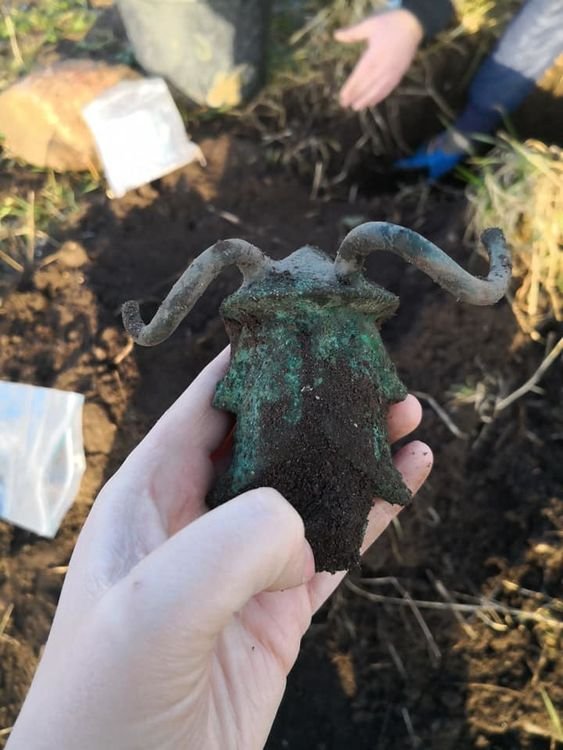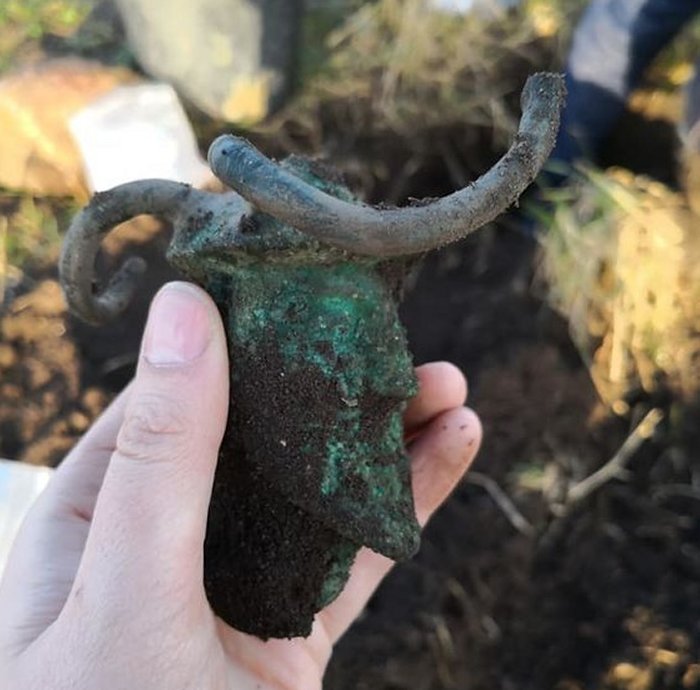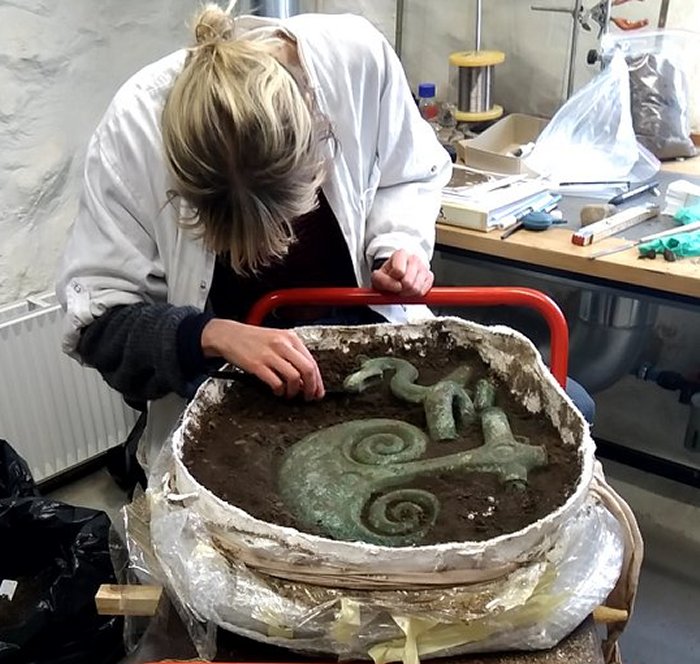Mysterious Kallerup’s Double-Headed Figurine – Evidence Of Unknown Norse God Or Worship Of Roman God Janus In Ancient Scandinavia?
Ellen Lloyd - Most are familiar with famous Norse gods such as Odin, Thor, Bragi, Tyr, and Frey, to mention a few.
Mysterious artifact with two heads was discovered in Kallestrup, Denmark. Credit: Kirstine Krath Nielsen / Museum Thy
Vikings gained strength from their gods and goddess, and the Norse pantheon consisted of several deities that played a significant role in Norse society.
An exciting discovery of a 3,000-year-old double-headed figurine may offer evidence of an unknown Norse God. Could this small yet significant ancient artifact open a new chapter in Norse mythology and ancient history? Have we overlooked an ancient god, or is this a depiction of theRoman God Janus, that was worshipped in ancient Scandinavia?
"Two-faced deities were worshipped in many different cultures.
The Roman god Janus was the 'god of gods,' who appeared first on the most ancient lists of Roman gods. He protected doors, gates, passages, beginnings, and endings." 1
Head of God Janus, Vatican museum, Rome. Credit: Loudon Dodd - Public Domain
It may be challenging to determine who this ancient being was, but it's a unique artifact, and the figurine was unearthed under somewhat different circumstances. Denmark, helping scientists look for parts from a crashed Second World War aircraft.
Using his metal detector, Jensen heard a sound indicating something of value was in the vicinity. He checked and noticed a large concentration of metal in the ground. Jensen removed the soil, and to his surprise, he could see this the object he had stumbled upon was not a part of a WWII plane but something extraordinary.
Archaeologists from the Museum of Thy hurried to the site, and everyone was delighted to see that Jensen had accidentally unearthed a precious ancient object of great historical value.
This valuable artifact was a figure with two heads. Archaeologists who examined the 3,000-year-old object explain the artifact had religious significance to our ancestors. The ancient sculpture depicting an unknown god was created to fit the staff.
Viksö (Veksø) helmets. Credit: Nationalmuseet, CC BY-SA 3.0
The figure is fascinating because the identical heads have helmets with horns. Despite many misconceptions, Vikings did not wear horned helmets.
On the other hand, the mysterious Bronze Age Viksö helmets discovered in southern Scandinavia have horns.
Due to their impractical size and shape, these ancient helmets were not used for war or fighting. Instead, the Viksö helmets were deliberately created for various religious ritual purposes.
The elaborate carvings on the helmets have symbolic meaning, and the objects are rich in spiritual meaning and most likely related to myths about holy animals and divine power.
Who was the ancient Kallerup deity? Credit: Kirstine Krath Nielsen / Museum Thy
"Scientists think these unique Bronze Age artifacts functioned as helmets and masks. The Viksö helmets are special.
Ancient Pages have previously presented several bizarre and fearsome ancient helmets, but the Viksö helmets differed significantly and were not designed to scare any enemy.
Some of them are equipped with eyes and a hooked beak. The hooked beak of a bird of prey and the large, round eyes perhaps indicate that it is an owl.
Scientists investigate the remarkable Kallerup treasure. Credit: Kirstine Krath Nielsen / Museum Thy
The helmets have manes like horses, and the horns on the helmets relate to the ox." 2
The double-headed figurine discovered in Kallerup has a goat's beard and may be related to worshiping an unknown animal god. Naturally, it is all speculation, but some exciting similarities are worth further consideration.
The spiral and snake played a significant role in the lives of ancient people. They reflected their most sacred beliefs, relation to the Universe, worshipped gods, and connection to family, animals, and nature.
Furthermore, the depictions of symbols such as the spiral and serpents found on the ancient staff also lend credibility to the theory this was an old ceremonial object.
Next to the enigmatic double-head figurine, archaeologists also discovered a ceremonial ax with a diameter of approximately 30 cm. Archaeologists believe that the double symbolism is somehow related to the ax. The ax could only have been used exclusively for religious ceremonies.
Written by - Ellen Lloyd – AncientPages.com
Updated on April 26, 2023
Copyright © AncientPages.com All rights reserved. This material may not be published, broadcast, rewritten or redistributed in whole or part without the express written permission of AncientPages.com
Expand for referencesMore From Ancient Pages
-
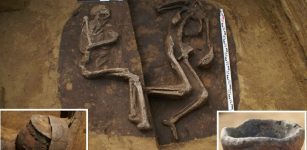 Unusual Grave Of The Trzciniec Culture Is An Archaeological Puzzle
Archaeology | Dec 23, 2019
Unusual Grave Of The Trzciniec Culture Is An Archaeological Puzzle
Archaeology | Dec 23, 2019 -
 Medusa – Cursed By Athena And Killed By Perseus
Featured Stories | Jul 30, 2018
Medusa – Cursed By Athena And Killed By Perseus
Featured Stories | Jul 30, 2018 -
 Why Was Europe’s Oldest Battle Fought At Tollense Valley 3,000 Years Ago?
Archaeology | Oct 25, 2024
Why Was Europe’s Oldest Battle Fought At Tollense Valley 3,000 Years Ago?
Archaeology | Oct 25, 2024 -
 Tides And Hurricane Activity Impacted The Maya Civilization – What Can This Tell About Modern Climate Change?
Archaeology | Aug 18, 2021
Tides And Hurricane Activity Impacted The Maya Civilization – What Can This Tell About Modern Climate Change?
Archaeology | Aug 18, 2021 -
 Genetic Changes In Bronze Age Southern Iberia
Archaeology | Nov 18, 2021
Genetic Changes In Bronze Age Southern Iberia
Archaeology | Nov 18, 2021 -
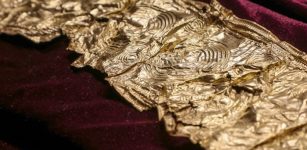 Unique Ornamented Golden Bronze Age Belt Discovered Near Opava, Czech Republic
Artifacts | Oct 28, 2022
Unique Ornamented Golden Bronze Age Belt Discovered Near Opava, Czech Republic
Artifacts | Oct 28, 2022 -
 Struggle To Get Mail On Time Has Lasted More Than 5,000 Years – Part 2
Featured Stories | Jul 31, 2017
Struggle To Get Mail On Time Has Lasted More Than 5,000 Years – Part 2
Featured Stories | Jul 31, 2017 -
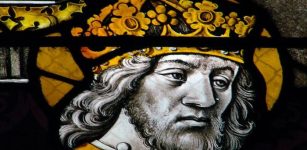 Charlemagne – Most Famous Emperor Of Education And Enemy Of Pagan Worshippers – What Did He Really Mean For Europe?
Featured Stories | Mar 22, 2023
Charlemagne – Most Famous Emperor Of Education And Enemy Of Pagan Worshippers – What Did He Really Mean For Europe?
Featured Stories | Mar 22, 2023 -
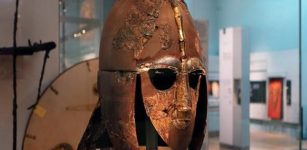 Burial Practices In Unified Cultures Of Early Medieval Europe
Archaeology | Jan 22, 2021
Burial Practices In Unified Cultures Of Early Medieval Europe
Archaeology | Jan 22, 2021 -
 Keshwa Chaca – Last Suspension Rope Bridge Of Inca People
Ancient Traditions And Customs | Apr 17, 2019
Keshwa Chaca – Last Suspension Rope Bridge Of Inca People
Ancient Traditions And Customs | Apr 17, 2019 -
 Subterranean Structure In Medieval Naryn-Kala Citadel: Was It The Christian Temple?
Archaeology | Jul 12, 2019
Subterranean Structure In Medieval Naryn-Kala Citadel: Was It The Christian Temple?
Archaeology | Jul 12, 2019 -
 On This Day In History: Raid On The Medway Took Place – On June 19, 1667
News | Jun 19, 2016
On This Day In History: Raid On The Medway Took Place – On June 19, 1667
News | Jun 19, 2016 -
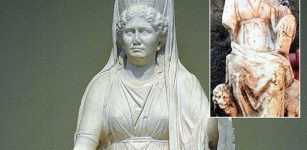 Marble 2th Century AD Statuette Of Goddess Cybele Unearthed In Bulgaria’s Plovdiv
Archaeology | Nov 5, 2019
Marble 2th Century AD Statuette Of Goddess Cybele Unearthed In Bulgaria’s Plovdiv
Archaeology | Nov 5, 2019 -
 Anatolia’s Seyitömer Mound Was Inhabited In Bronze Age, Achaemenid, Hellenistic, And Roman Times
Archaeology | Aug 17, 2020
Anatolia’s Seyitömer Mound Was Inhabited In Bronze Age, Achaemenid, Hellenistic, And Roman Times
Archaeology | Aug 17, 2020 -
 4,000-Year-Old Lunar Calendar Developed At Kokino Megalithic Observatory – Evidence Of Remarkable Astronomical Knowledge
Archaeoastronomy | Jan 9, 2021
4,000-Year-Old Lunar Calendar Developed At Kokino Megalithic Observatory – Evidence Of Remarkable Astronomical Knowledge
Archaeoastronomy | Jan 9, 2021 -
 Mystery Of Charterhouse Warren’s Early Bronze Age Site Solved By Scientists
Archaeology | Dec 27, 2024
Mystery Of Charterhouse Warren’s Early Bronze Age Site Solved By Scientists
Archaeology | Dec 27, 2024 -
 Jiangshi – Terrifying Vicious Ancient Chinese Vampire In Disguise
Chinese Mythology | Jun 11, 2020
Jiangshi – Terrifying Vicious Ancient Chinese Vampire In Disguise
Chinese Mythology | Jun 11, 2020 -
 Was There An Explosion In The Great Pyramid In Antiquity?
Featured Stories | Aug 6, 2014
Was There An Explosion In The Great Pyramid In Antiquity?
Featured Stories | Aug 6, 2014 -
 Tooth Analysis Sheds Light On South Australia’s Early Colonial History
Archaeology | Jul 6, 2022
Tooth Analysis Sheds Light On South Australia’s Early Colonial History
Archaeology | Jul 6, 2022 -
 Old Age Isn’t A Modern Phenomenon: Many People Lived Long Enough To Grow Old In The Olden Days, Too
Featured Stories | Aug 11, 2022
Old Age Isn’t A Modern Phenomenon: Many People Lived Long Enough To Grow Old In The Olden Days, Too
Featured Stories | Aug 11, 2022

